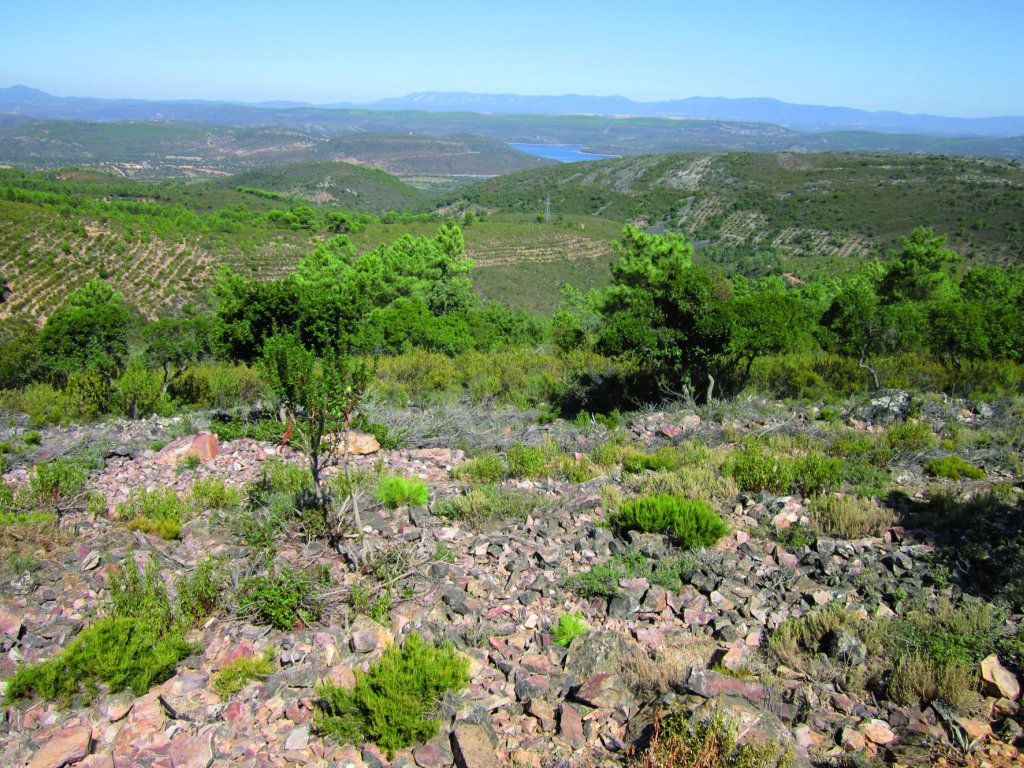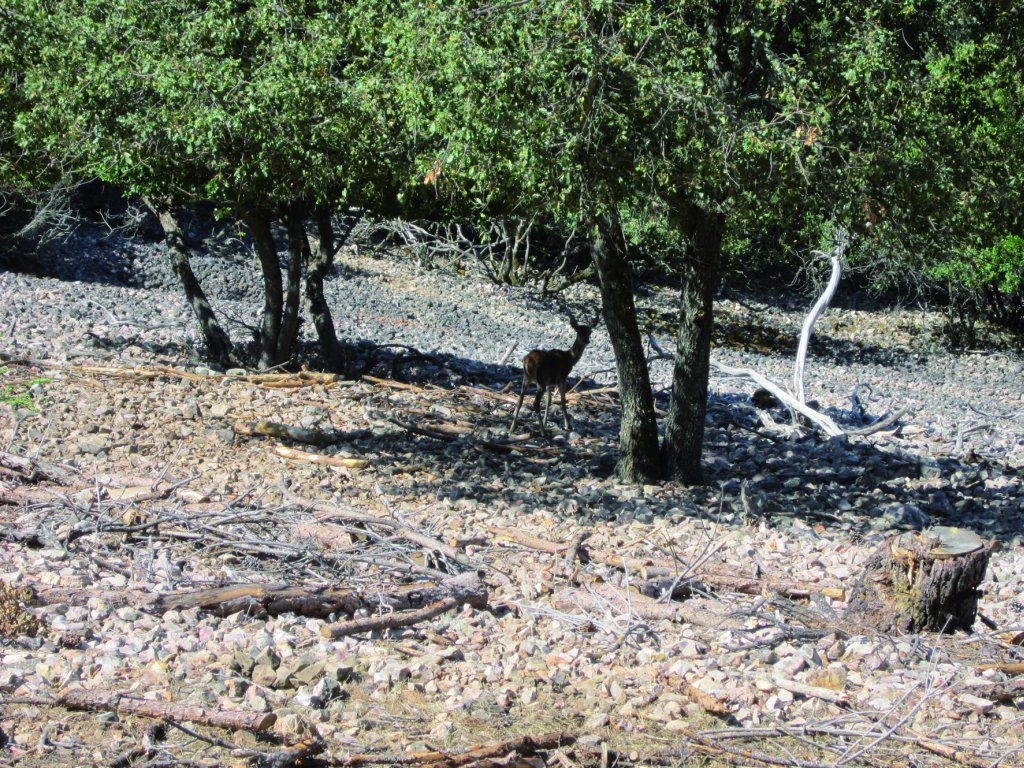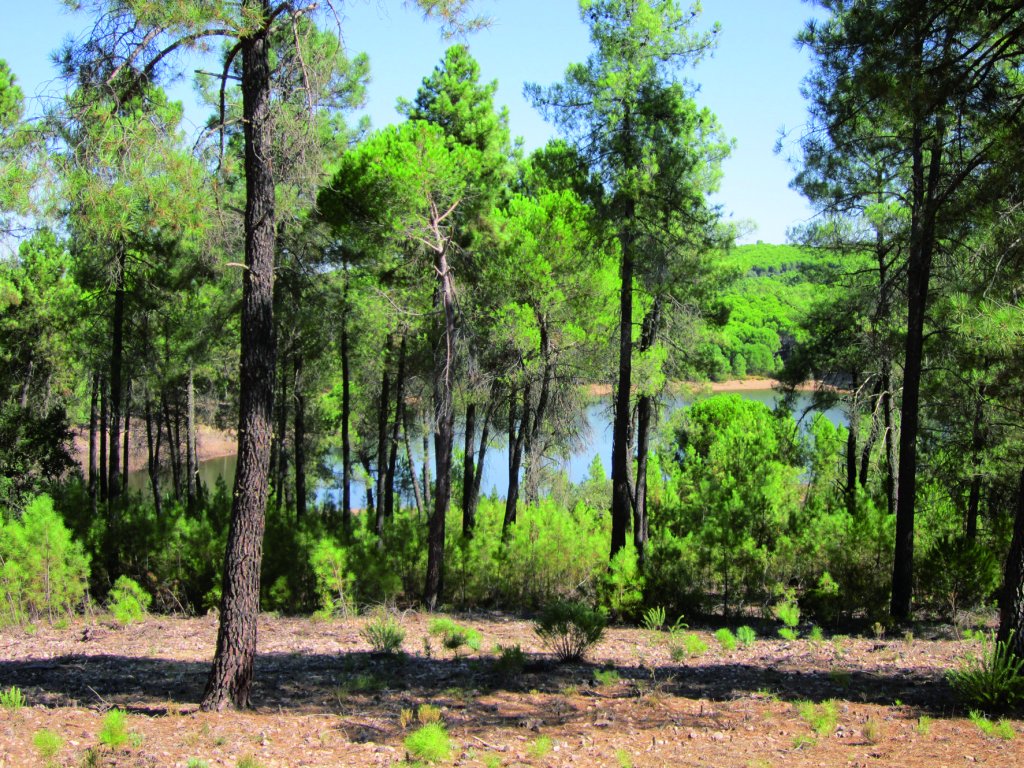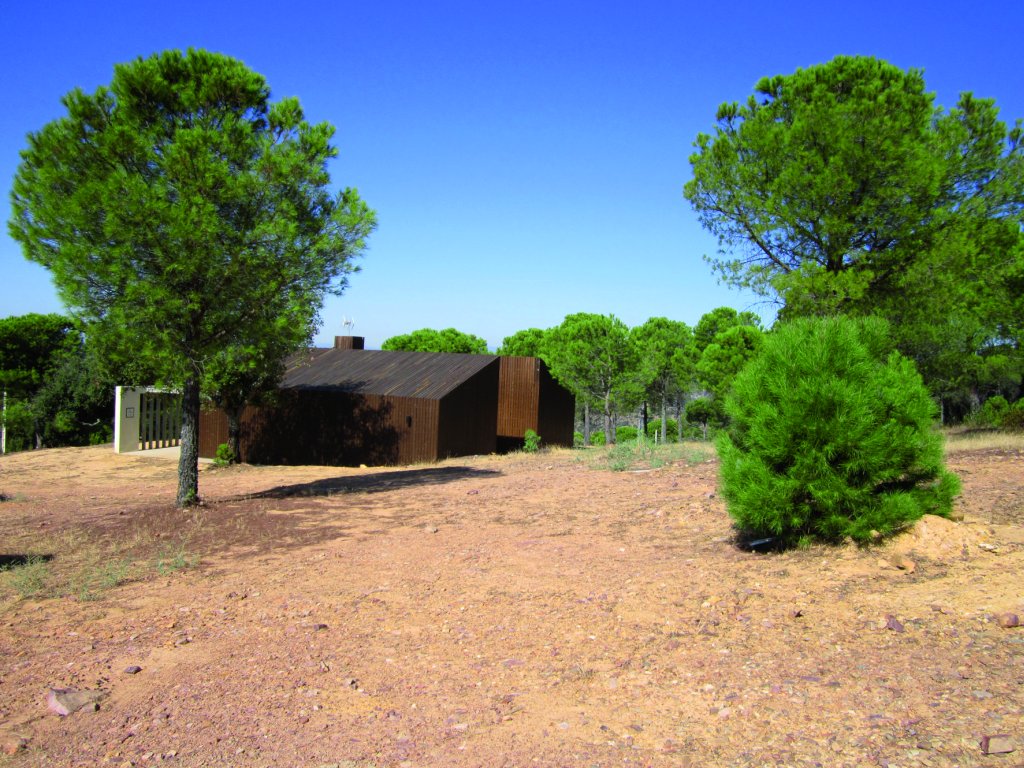Stage 18: Helechosa de los Montes - Poblado de Guadisa
Description

Climbing from the reservoir to Monte de Cíjara
This Stage links two towns on the shores of Cíjara Reservoir. To reach the town of Poblado de Guadisa, at the base of the reservoir, the route traverses first through the pinewoods of Monte de Cíjara, and then across the oak forests near the River Guadiana. Both woodlands are part of the Cíjara Regional Hunting Reserve.
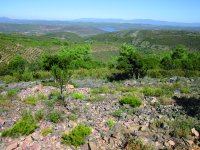
This Stage starts at the town hall square of Helechosa de los Montes, with a fountain in the middle, and continues along a street ending at the parish church of Nuestra Señora de Altagracia, next to the church of Asunción. This small, rural church, built in the late-medieval style, still has the original, 16th-century, wood ceiling.
The Trail heads out of the village along narrow streets, crosses the BA-7021, and takes the concrete path on the opposite side, where a municipal water tank and booster antenna stand. This steep path climbs up a slope covered with scrub until it reaches a more or less flat terrain halfway up Sierra de la Rinconada. This area is known as Morro de la Naciente. The Trail initially traverses through an agricultural area primarily covered with olive trees, although the side closest to Cíjara Reservoir is populated with rockrose (Cistus sp.), heather(Erica sp.), kermes oak (Quercus coccifera) and strawberry trees (Arbustus unedo). The Trail continues through a forest in which stone pines(Pinus pinea) and maritime pines(Pinus pinaster) alternate. The route continues straight ahead to the intersection with Stage 17, where the common stretch ends.
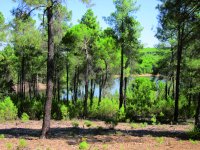
From here, the Trail runs through pine forests, with an occasional holm oak (Quercus ilex), sometimes in the valleys or on the edge of the pinewoods. During the first few kilometres, the route ventures through clearings conveniently oriented to view Cíjara Reservoir.
The pine-holm oak forest can clearly be seen in some places, including Morro de Epifanio, a close-by hill off the Trail. Pinewoods dominate most of the route, except in the flood plain.
In the first few kilometres, one can see, through strawberry trees and kermes oaks, the fallow deer (Dama dama) eating acorns. If given the choice, fallow deer and deer(Cervus elaphus) clearly prefer holm oaks. Nonetheless, they can also be found in pine forests, such as the ones traversed in this Stage.
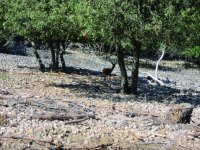
There is a fire pond at the ravine formed by the Malos Pasos Creek, which is clearly visible from the Trail through the trees. This large pond brings contrast to this Stage dominated by pinewoods and clearings, along which the forest path runs.
The flat area populated with maritime pine, known as Cruce de las Mesas, is an excellent spot to rest as there is a forest refuge and rest area.
Almost at the end of the Stage, the route arrives at Casa de Cíjara, a modern hotel complex with several wood cabins for rent. Here starts a signposted route, known as Pinar de Cíjara, which is part of the Caminos Naturales network. It should be noted that there is a larger variety of undergrowth species in this area, in particular rockrose, rosemary (Rosmarinus sp.) and thyme (Thymus sp.). From here, and until the end of the Stage, the Trail ventures through “Puerto Peña – Los Golondrinos” SCI (Site of Community Importance) and SPA (Special Protection Area for Birds).
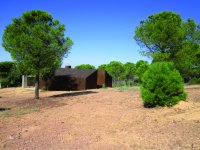
A few kilometres past the hotel complex, the path reaches the edge of a pinewood, which gradually gives way to holm oaks. Stands of cork oak (Quercus suber) also pop up here and there.
Increasing numbers of deer and fallow deer can be seen in the areas common with Stage 19, where pine trees have virtually disappeared. The route drifts away now to the right, towards the reservoir. As the path heads up, one can see hydraulic works, which henceforth dominate the landscape. The Stage reaches the reservoir, and the road from Helechosa emerges from the right, along the reservoir’s 300-metre long crest road. One can enjoy breath-taking panoramic views from here. At the end of the road, the Trail is interrupted for one kilometre by the N-502. Further on, it turns onto a paved road to the left that leads to Poblado de Guadisa, the endpoint of this Stage.
Profile
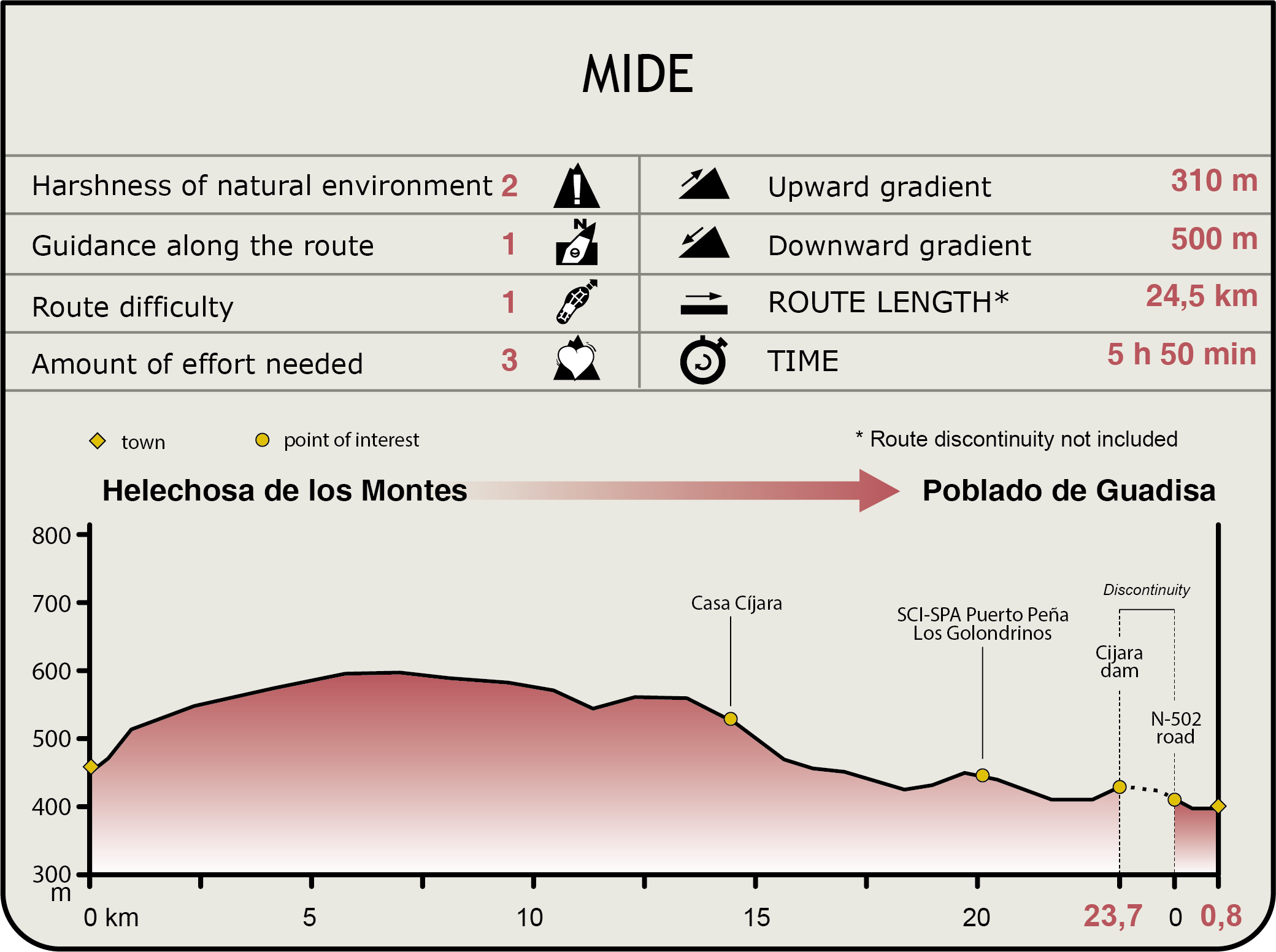
MIDE (Method for the Information of Excursions)
Featured
Further information
Casa de Cíjara
Casa de Cíjara is one of three hotel complexes built within the Cíjara Regional Game Reserve. Although the outside aesthetics seeks to blend in with nature, the decor inside is modern and full of amenities. It has even been adapted to accommodate disabled guests. Casa de Cíjara, located in the middle of the forest, consists of five rural accommodations, plus a communal lounge and a patio with a stone oven. It is accessed via the Game Reserve’s main track.
